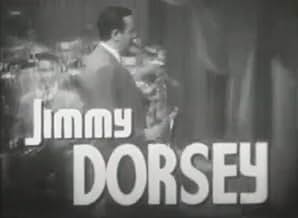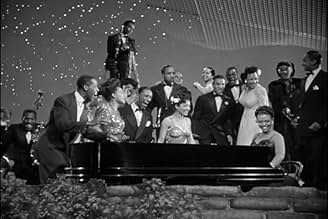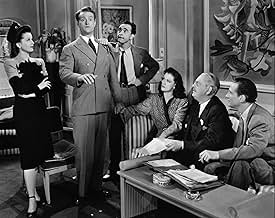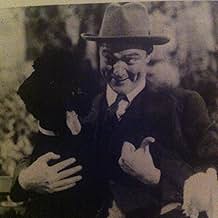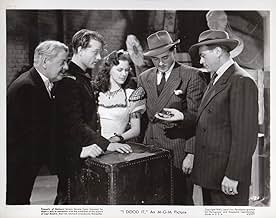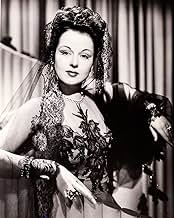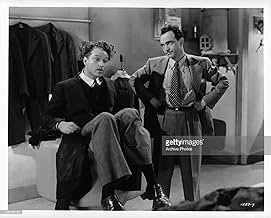Ajouter une intrigue dans votre langueA bumbling pants presser at an upscale hotel's valet service nurses an unrequited crush on a Broadway star. He gets more than he bargained for when she agrees to marry him, to spite her woma... Tout lireA bumbling pants presser at an upscale hotel's valet service nurses an unrequited crush on a Broadway star. He gets more than he bargained for when she agrees to marry him, to spite her womanizing fiance, and encounters Nazi saboteurs.A bumbling pants presser at an upscale hotel's valet service nurses an unrequited crush on a Broadway star. He gets more than he bargained for when she agrees to marry him, to spite her womanizing fiance, and encounters Nazi saboteurs.
- Réalisation
- Scénario
- Casting principal
Avis à la une
On the whole, the 100-minutes amounts to a rather unwieldy package, with a few over-stretched routines and an awkward Nazi subplot. But then this is 1943 and everybody's got to do their part. Note, for example, how class differences—a pants presser vs. a Broadway star—are overcome, while Blacks are presented in a non- demeaning way. It's like we've all got to pull together to defeat the Axis. And catch that last sequence where Red battles the Nazi Hodiak. Judging from the screen environs, I'll bet it was filmed in MGM's prop room with the lifts, props and catwalks all doing their part.
Overall-- as another reviewer points out—it's more a movie of parts than a whole. But some of those parts are fairly memorable. Most of all, however, hats off to the fearless Elinor Powell.
So I've been watching lots of 30s movies, not because they are good or particularly enjoyable. But because you can see the genotype of today's movies, which is to say I can see the origins of how we all dream and mostly imagine.
Now here is an anomaly, a 30s movie made in the 40s. I can only imagine that it was to feed the war-starved theaters. It is a remake and "borrows" musical numbers from a couple films that really were made in the 30s.
It is a spliced picture, three movies combined, something that was common in the 30's.
One movie is a stage show. Simple and straightforward. Lots of variety here.
A second movie is a comedic fold: a movie where all the players are involved in some way in a play (different than the earlier mentioned performances and more like "Gone with the Wind"). Lots of physical humor here. Red Skelton's technique was to perform a comedic motion (like rolling his eyes after getting bonked) in an exaggerated fashion and then abruptly stop before it finished and look at the audience with a big grin. It was humor about humor, a not very sophisticated but an effective fold that would grow into what we have today (and call irony).
The third movie has a wartime saboteur. Because the "fold," the notion of the play within the play, is explicit here, the explosion is to blow up the theater (and somehow simultaneously threaten the nation by mechanisms unexplained).
Its a mess, these three parts not integrated in any way.
Ted's Evaluation -- 1 of 3: You can find something better to do with this part of your life.
"I Dood It" is one of the weakest films that Red Skelton made for MGM and there are two huge strikes against it--and one smaller one. First, it's a remake and the original (starring Buster Keaton) is a better film--though for Keaton standards it's also a weak effort. Second, like too many of MGM's films, the studio insisted on inserting a lot of music into the film, as they really didn't seem to trust comedy. Because of this, Skelton, who could be very funny, seems like an afterthought at times. As for the smaller strike against the film, because it was made during WWII, they inserted a completely unnecessary subplot near the end about some evil-doer trying to blow things up to somehow aid the Axis. It really made no sense and was obviously tossed in at the last minute.
Note: To show how poor this movie is, the final musical number is recycled--taken from a Powell film ("Born to Dance") made seven years earlier.
Red Skelton was his usual great. I understand that Buster Keaton was his coach for some of the slapstick, and it showed. But one genius plus one genius equals some great comedy, so that was okay with me.
However, I was really blown away by three performers I didn't know very well. Eleanor Powell was a fine actress and a fantastic dancer. Check out her lasso dance near the beginning of the film. Absolutely amazing! And then later in the film comes Hazel Scott, a phenomenal jazz pianist who I'd never heard before. Then shortly thereafter we have Lena Horne in her powerful "Jericho" number. Those scenes alone make the movie worth spending a little time on.
There were a lot of musical numbers, too many in fact, and I have to admit I fast forwarded through the more tedious of them. And the plot was -- as many people have mentioned -- disjointed and illogical. But there's enough gold in this film to make it an enjoyable, although certainly not classic, movie event.
Le saviez-vous
- AnecdotesEleanor Powell reportedly knocked herself out cold during rehearsals for the lariat dance.
- Citations
Kenneth Lawlor: How's the piano, Hazel?
[Hazel runs her fingers up and down the keyboard]
Hazel Scott: I guess it'll hold up.
- Versions alternativesThere is an Italian edition of this film on DVD, distributed by DNA srl, "THE BAND WAGON (Spettacolo di varietà, 1953) - New Widescreen Edition + IL SIGNORE IN MARSINA (1943) (Shortened Version)" (2 Films on a single DVD, with "The Band Wagon" in double version 1.33:1 and 1.78:1), re-edited with the contribution of film historian Riccardo Cusin. This version is also available for streaming on some platforms.
- ConnexionsEdited from L'amiral mène la danse (1936)
- Bandes originalesStar Eyes
(1943)
Lyrics by Don Raye
Music by Gene de Paul
Played Jimmy Dorsey and His Orchestra (uncredited) at a nightclub
Sung by Bob Eberly (uncredited) and Helen O'Connell (uncredited)
Danced by Red Skelton (uncredited) and Eleanor Powell (uncredited)
Played as background music often
Meilleurs choix
- How long is I Dood It?Alimenté par Alexa
Détails
- Durée1 heure 42 minutes
- Couleur
- Rapport de forme
- 1.37 : 1
Contribuer à cette page



